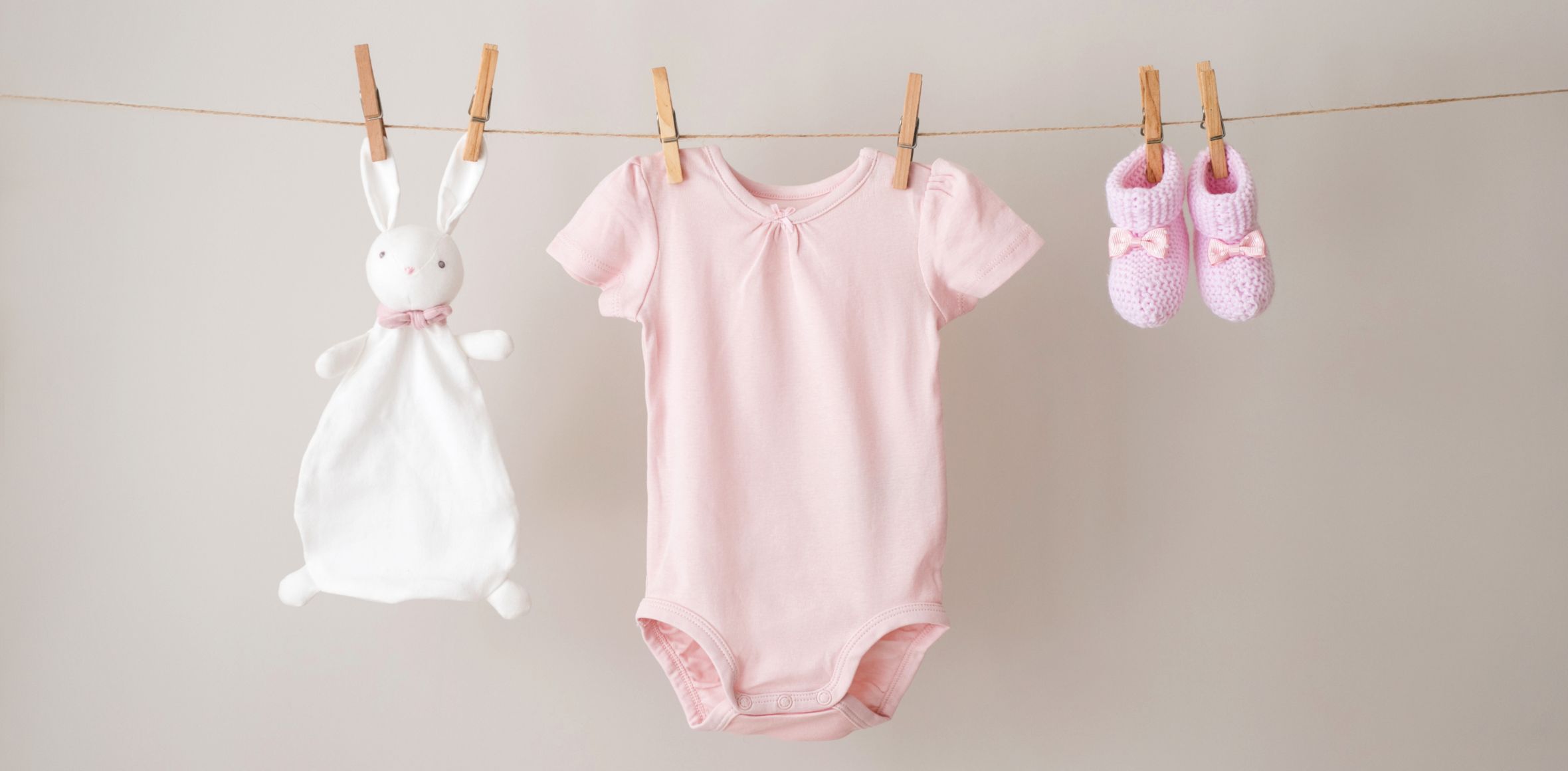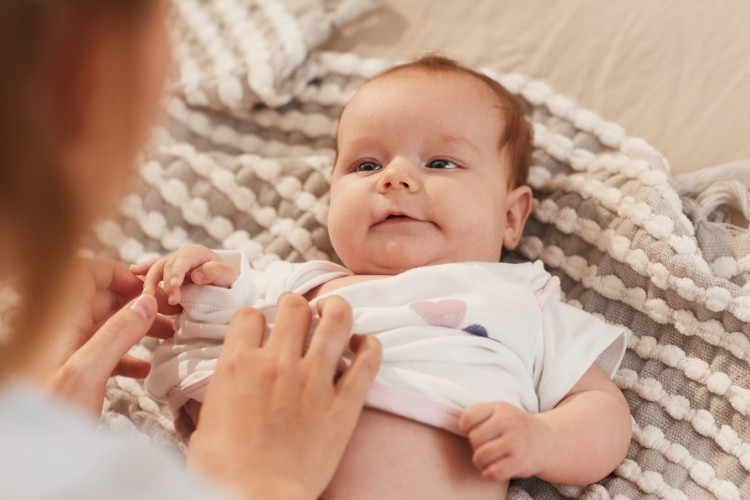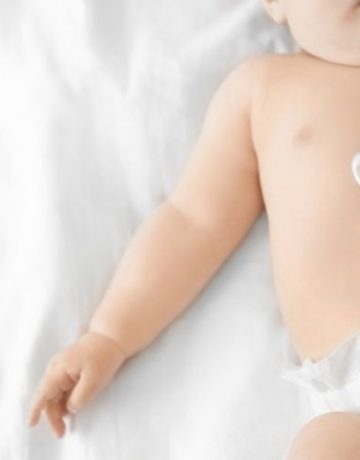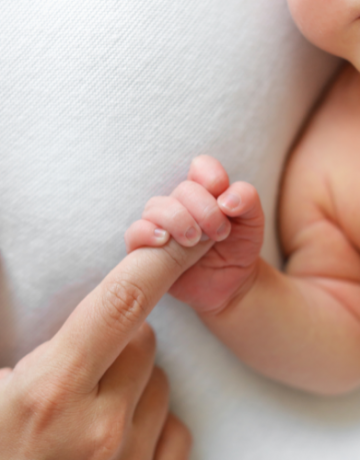Baby skin, detergents and textiles
This post was written by Dr. Pleimes, a specialist in pediatrics, dermatology and allergology
Click here to read further information about Dr. Pleimes.
When it comes to the question of the optimal clothing and the best methods of cleaning it, there is no generally applicable guideline that classifies products as basically good or bad. The techniques, material and ingredient combinations used are too varied. Ingredients in cosmetics, detergents and fabric softeners are subject to constant change. Processing techniques and materials used in textile clothing are also changing.
Irritation of the skin and contact allergies
When we talk about reactions to ingredients in cleaning products or cosmetics, these are usually either irritative reactions, due to an irritation of the substance itself, or so-called contact allergies. In the case of a contact allergy, a reaction of the body, or more precisely of the immune system, takes place. Our body recognizes a substance as foreign and stores this as information. At the next contact, a reaction is then directly triggered. In contrast to food allergies or pollen allergies (so-called immediate-type allergies), however, the visible reaction takes place with a delay. It usually takes about a day for a reddening of the skin and scaling or irritation to develop. This often makes it difficult to recognize a contact allergy. It is also typical that a contact allergy usually develops to substances with which frequent contacts (over months or years without symptoms) have already taken place.
In the case of a contact allergy, usually only, but the entire, contact points with the substance in question are scaly and reddened in the course (sometimes also irritated with small blisters) Other areas of the body are usually not affected. Contact allergies to cosmetic ingredients are significantly more common than contact allergies to clothing detergents or fabric softeners. Different substances can trigger allergies, such as preservatives, emulsifiers, wool waxes, dyes, surfactants, bleaching agents, enzymes or fragrances and others.
Detergent and fabric softener
What detergent should be used to wash laundry and baby clothes, so as not to damage the baby’s skin?
Baby skin is significantly more sensitive than adult skin. It therefore makes sense to avoid unnecessary ingredients such as fragrances as far as possible and to choose products with few potentially allergenic compositions. When choosing the right products, certifications can be helpful, such as those of the ECARF (European Centre for Allergy Research Foundation) or the DAAB (German Allergy and Asthma Association). Liquid detergents probably leave less residue on clothing than powder detergents. Overall, however, contact allergies in children are very rare, partly because detergents are largely washed out by modern washing machines.

Should I use a fabric softener on my baby or would I rather not?
The use of a fabric softener causes ingredients, such as certain surfactants, to attach to the textile fibers during the final wash cycle, making them softer to wear against the skin.
However, the use of a tumble dryer also leads to a softer surface of the clothing.
Especially for sensitive skin types, such as children with an incipient neurodermatitis or eczema tendency or very dry skin, it is beneficial to avoid friction on the skin. The advantage of using fabric softeners* and thus less friction on sensitive skin outweighs the disadvantages here.
*Not every textile is suitable for the use of fabric softeners. Please follow manufacturer’s instructions.
Textiles suitable for babies
Which textiles should be used for babies and why?
Very good for baby clothes are thin, soft, smooth fabrics, for example, cotton. Cotton is durable and can be cleaned at higher temperatures in case of contamination. From an ecologically sustainable point of view, the use of organic cotton is recommended. Lyocell or viscose, as fabrics made from cellulose, also offer smooth and well-tolerated surfaces. Wool, on the other hand, leads to increased irritation, especially for sensitive skin types, and should be avoided as a contact layer on the skin, especially for children who are prone to neurodermatitis. Additives such as spandex can also improve the comfort of use, but are less temperature tolerant during cleaning.
Depending on the outside temperature, it is better to put on several thinner layers on top of each other instead of a single very warm textile.
- In warm weather, if necessary, only one a light undergarment and outerwear.
- In cold weather several layers. This also has the advantage that when you come back indoors in cool outside temperatures, you can easily remove individual layers of clothing so that your baby does not overheat.
Babies regulate their temperature to a large extent through their head. In cold weather, this should be covered with a hat that is tight enough that it cannot slip over the face. However, indoors in warm temperatures, the cap should definitely be removed. Otherwise, overheating may occur.
What clothes do I use for my baby when sleeping?
For sleeping, in addition to the cotton bodysuit, a baby sleeping bag can be used. This should have the right size for your child, so that slipping in and covering the face can not take place. A rather close-fitting neckpiece and armholes, without a hood, seem advantageous. No other clothing such as a cap or bib should be left on the child that could inadvertently cover the face. Wearing a cap also puts your child at additional risk of overheating.
Swaddling, i.e. tightly wrapping your child’s arms, is controversial. Although it is supposed to soothe the child to sleep, it can cause too much pressure on certain parts of the body if done incorrectly. For babies with an inherent tendency to hip problems, swaddling can also have an unfavorable effect on hip development.
What are the right clothes for good sun protection?
Note: In children, especially in the first 2 years of life, the skin’s own sunlight (UV radiation) protection mechanism is not yet fully developed. Very young children must therefore be particularly well protected against the sun. The best protection is provided by: Avoidance of the sun, then clothing with UV protection, and last but not least, sunscreens.
If avoiding the sun is not possible, sun protective clothing should be used for sun protection during the first 2 years of life and the use of sun creams should be limited to a minimum, the exposed and sun-exposed areas.
In principle, all clothing protects against UV rays, but depending on the color and thickness of the fabric, textiles sometimes allow large amounts of UV rays to pass through to the skin. Therefore, textiles with built-in UV protection should be used for clothing.
There are different standards, certifications and testing requirements for textiles, e.g.
- Australian-New Zealand standard (AS/NZW 4399)
- European standard (DIN EN13758-1)
- American standard (AATCC TM183)
With these, textiles are tested in new condition.
Textiles / baby clothing with the UV Standard 801 are subject to a very strict test procedure and the clothing is also examined here in stretched and washed condition, i.e. under conditions of use.
The UVP (Ultraviolet Protection Factor) is given for clothing, which indicates how much longer you can stay in the sun compared to an unprotected state before sun damage occurs to the skin. This self-protection time of the skin is only a few minutes in children, depending on skin type and sun intensity. For example, if the self-protection were 3 min, clothing with UVP 80 would increase the protected time to 80 x 3 min = 240 min.
A sun protection hat with sufficient brim shading the face and neck complements the clothing.
What should be considered when choosing diapers?
Which one represents the best diaper is difficult to answer. From a sustainable and ecological point of view, reusable, washable diapers / cloth diapers are probably advantageous, because despite a higher consumption of water for regular cleaning, the overall balance for the environment is still positive.
For the skin itself, however, cloth diapers are less effective at wicking moisture away from the skin surface, and a combination of urine, fecal enzymes, and fecal germs can cause skin irritation more quickly in this environment. This can result in irritative-toxic diaper dermatitis/diaper rash. Yeast germs also multiply better in a warm, moist environment. If there is inflamed skin in the diaper area or a tendency to this, disposable diapers with superabsorbent properties are advantageous. They create a more positive environmental situation for the healing process.
This is less important for healthy inconspicuous diaper skin.
In the disposable diaper sector, too, there are now manufacturers who use biodegradable superabsorbents and diaper components.





Comments (0)